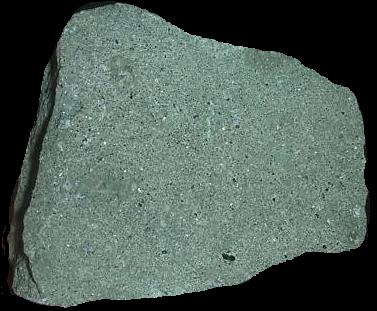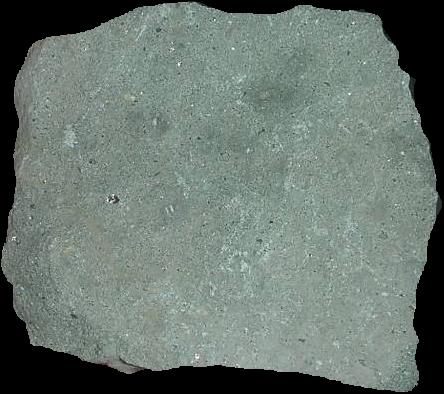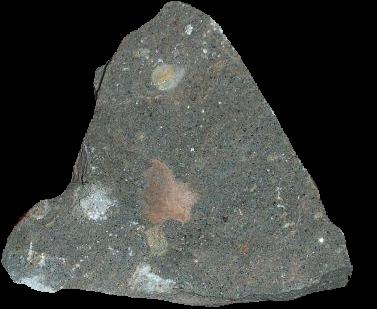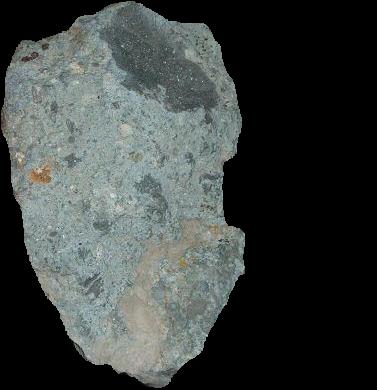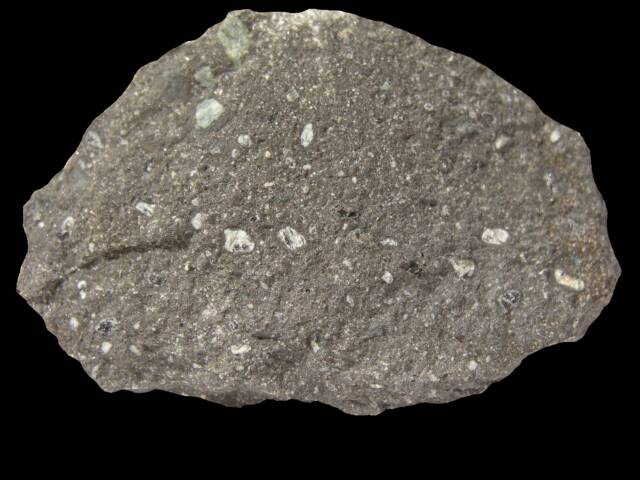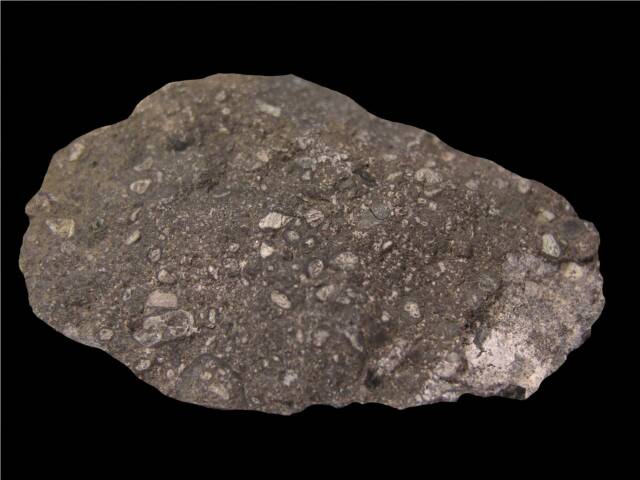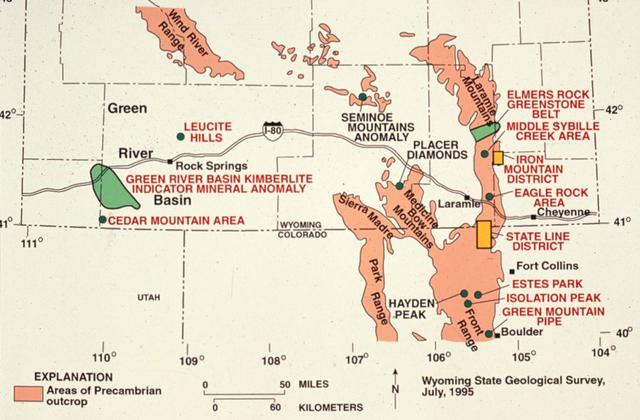Kimberlite
Photographed by Michael P. Klimetz
Photographed by Michael P. Klimetz
"Wyomingite"
Boar's Tusk
WYOMING
Alhambra
UTAH
Green Street Dike
Syracuse
Onondaga County
NEW YORK
Green Street Dike
Syracuse
Onondaga County
NEW YORK
Photographed by Michael P. Klimetz
Green Street Dike
Syracuse
Onondaga County
NEW YORK
Photographed by Michael P. Klimetz
Photographed by Michael P. Klimetz
Tompkins County
NEW YORK
Tompkins County
NEW YORK
Xenolith
Photographed by Michael P. Klimetz
Photographed by Michael P. Klimetz
Photographed by Michael P. Klimetz
Green Street Dike
Syracuse
Onondaga County
NEW YORK
Kimberlite is a type of potassic volcanic rock best known for sometimes containing diamonds. It is named after the town of Kimberley in South Africa, where the discovery of an 83.5-carat (16.7 g) diamond in 1871 spawned a diamond rush. Kimberlite occurs in the Earth's crust in vertical structures known as kimberlite pipes. Kimberlite pipes are the most important source of mined diamonds today. The general consensus, reached on kimberlites, is that they are formed deep within the mantle, at depths between 150 and 450 kilometres (93 and 280 mi), from anomalously enriched exotic mantle compositions, and are erupted rapidly and violently, often with considerable carbon dioxide and other volatile components. It is this depth of melting and generation which makes kimberlites prone to hosting diamond xenocrysts. Kimberlite has, in many ways, attracted more attention than its relative volume might suggest that it deserves. This is largely because it serves as a carrier of diamonds and garnet peridotite mantle xenoliths to the Earth's surface. Furthermore, its probable derivation from depths greater than any other igneous rock type, and the extreme magma composition that it reflects in terms of low silica content and high levels of incompatible trace element enrichment, make an understanding of kimberlite petrogenesis important. In this regard, the study of kimberlite has the potential to provide valuable information on the composition of the deep mantle, and melting processes occurring at or near the interface between the cratonic continental lithosphere and the underlying convecting asthenospheric mantle. Kimberlites occur as carrot-shaped, vertical intrusions termed 'pipes' [see profile below]. This classic carrot shape is formed due to a complex intrusive process of kimberlitic magma which inherits a large proportion of both CO2 and H2O in the system, which produces a deep explosive boiling stage that causes a significant amount of vertical flaring. Kimberlite classification is based on the recognition of differing rock facies. These differing facies are associated with a particular style of magmatic activity, namely crater, diatreme and hypabyssal rocks. The morphology of kimberlite pipes, and the classical carrot shape, is the result of explosive diatreme volcanism from very deep mantle-derived sources. These volcanic explosions produce vertical columns of rock that rise from deep magma reservoirs. The morphology of kimberlite pipes is varied but generally includes a sheeted dyke complex of tabular, vertically dipping feeder dykes in the root of the pipe which extends down to the mantle. Within 1.5–2 km (0.93–1.2 mi) of the surface, the highly pressured magma explodes upwards and expands to form a conical to cylindrical diatreme, which erupts to the surface. The surface expression is rarely preserved but is usually similar to a maar volcano. The diameter of a kimberlite pipe at the surface is typically a few hundred meters to a kilometer (up to 0.6 mile). Kimberlites are the most important source of primary diamonds. Many kimberlite pipes also produce rich alluvial or eluvial diamond placer deposits. However, only about 1 in 200 kimberlite pipes contain gem-quality diamonds. The deposits occurring at Kimberley, South Africa were the first recognized and the source of the name. The Kimberley diamonds were originally found in weathered kimberlite which was colored yellow by limonite, and so was called yellow ground.Deeper workings encountered less altered rock, serpentinized kimberlite, which miners call blue ground.
Tompkins County
NEW YORK
Photographed by Michael P. Klimetz
Photographed by Michael P. Klimetz
Iron Mountain District
WYOMING
Photographed by Michael P. Klimetz
Murfreesboro
ARKANSAS
Photographed by Michael P. Klimetz
Murfreesboro
ARKANSAS
Photographed by Michael P. Klimetz
[Core Section]
Ville Marie
Lac Temiskaming
Quebec
CANADA
Photographed by Michael P. Klimetz
[Core Section]
Ville Marie
Lac Temiskaming
Quebec
CANADA
Photographed by Michael P. Klimetz
[Core Section]
Ville Marie
Lac Temiskaming
Quebec
CANADA
Photographed by Michael P. Klimetz
[Core Section]
Ville Marie
Lac Temiskaming
Quebec
CANADA
Photographed by Michael P. Klimetz
[Core Section]
Ville Marie
Lac Temiskaming
Quebec
CANADA
Photographed by Michael P. Klimetz
[Core Section]
Ville Marie
Lac Temiskaming
Quebec
CANADA
Photographed by Michael P. Klimetz
Lake Ellen
Iron County
MICHIGAN
Photographed by Michael P. Klimetz
Lake Ellen
Iron County
MICHIGAN
Photographed by Michael P. Klimetz
Lake Ellen
Iron County
MICHIGAN
Photographed by Michael P. Klimetz
Lake Ellen
Iron County
MICHIGAN
Photographed by Michael P. Klimetz
Lake Ellen
Iron County
MICHIGAN
Photographed by Michael P. Klimetz
Lake Ellen
Iron County
MICHIGAN
Photographed by Michael P. Klimetz
Lake Ellen
Iron County
MICHIGAN
Photographed by Michael P. Klimetz
Lake Ellen
Iron County
MICHIGAN
Photographed by Michael P. Klimetz
Lake Ellen
Iron County
MICHIGAN
Photographed by Michael P. Klimetz
Lake Ellen
Iron County
MICHIGAN
Photographed by Michael P. Klimetz
[Cut Slab]
New Liskeard
Ontario
CANADA
Photographed by Michael P. Klimetz
[Cut Slab]
New Liskeard
Ontario
CANADA
Photographed by Michael P. Klimetz
[Cut Slab]
New Liskeard
Ontario
CANADA
Photographed by Michael P. Klimetz
[Serpentinized and Reaction-Rimmed Olivine Phenocryst]
New Liskeard
Ontario
CANADA
Photographed by Michael P. Klimetz
[Cut Slab]
New Liskeard
Ontario
CANADA
Photographed by Michael P. Klimetz
[Diamond-Bearing]
Moen Kimberlite
State-Line Kimberlite District
Larimer County
COLORADO
Photographed by Michael P. Klimetz
[Diamond-Bearing]
Moen Kimberlite
State-Line Kimberlite District
Larimer County
COLORADO
Photographed by Michael P. Klimetz
[Diamond-Bearing]
Moen Kimberlite
State-Line Kimberlite District
Larimer County
COLORADO
Photographed by Michael P. Klimetz
[Diamond-Bearing]
Moen Kimberlite
State-Line Kimberlite District
Larimer County
COLORADO
Photographed by Michael P. Klimetz
[Diamond-Bearing]
Moen Kimberlite
State-Line Kimberlite District
Larimer County
COLORADO
Photographed by Michael P. Klimetz
[Diamond-Bearing]
Moen Kimberlite
State-Line Kimberlite District
Larimer County
COLORADO
Location Map
Idealized Profile of Kimberlite Pipe
Photographed by Michael P. Klimetz
[Diamond-Bearing with Deeply Weathered Rind]
Moen Kimberlite
State-Line Kimberlite District
Larimer County
COLORADO
